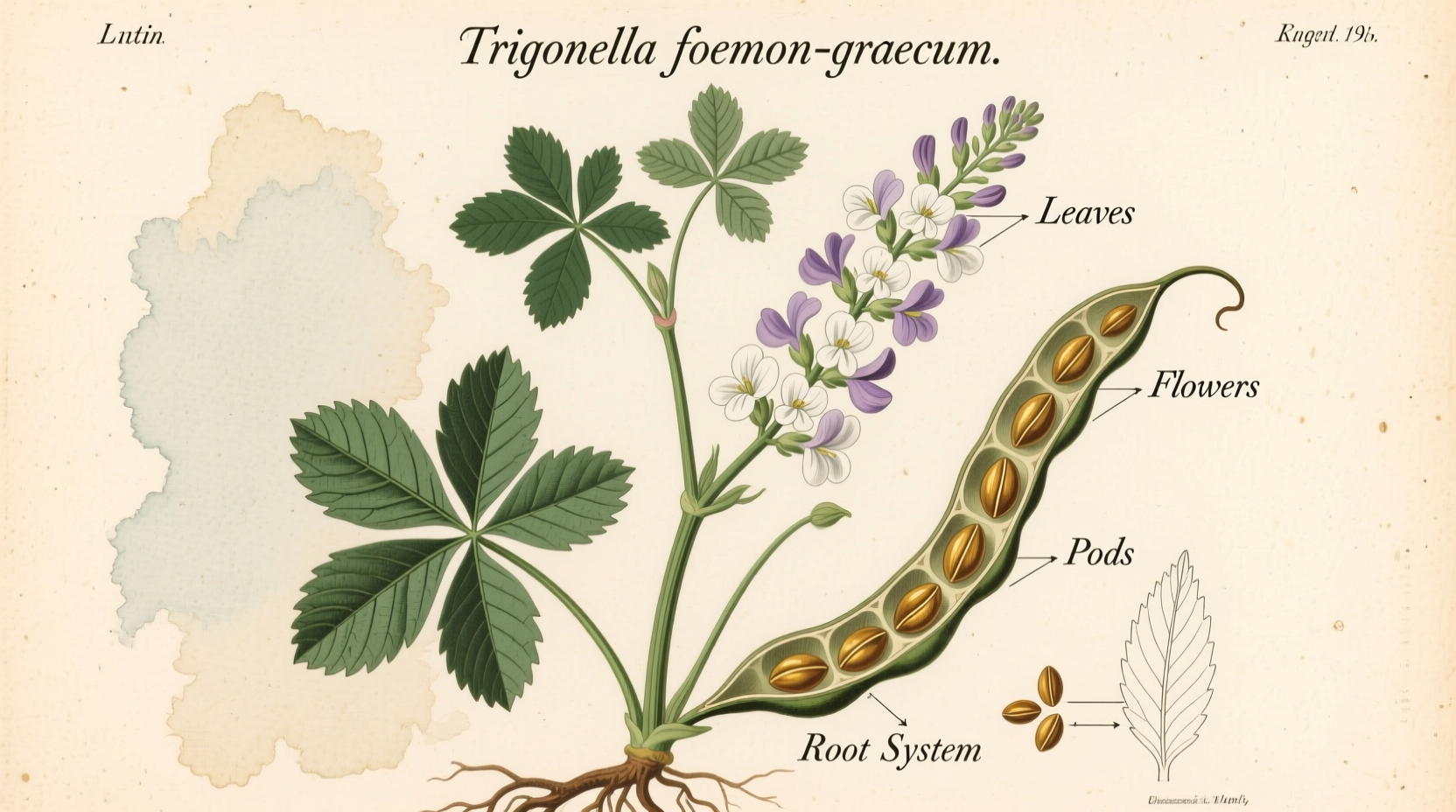Ever wondered about that distinctive maple-like aroma in your curry or the mysterious ingredient behind authentic Indian pickles? Fenugreek isn't just another spice on the shelf—it's a culinary cornerstone connecting ancient civilizations through its unique flavor profile and remarkable versatility. Whether you're exploring traditional recipes or seeking natural wellness options, understanding fenugreek unlocks new dimensions in your kitchen and pantry.
The Fenugreek Plant: More Than Just Seeds
Fenugreek (Trigonella foenum-graecum) grows as a delicate annual plant reaching 1-2 feet in height, featuring light green trifoliate leaves and small white flowers that develop into slender seed pods. Each pod contains 10-20 small, amber-colored seeds with a distinctive rectangular shape and deep aroma. The plant thrives in Mediterranean and South Asian climates but adapts well to various growing conditions, making it accessible to home gardeners worldwide.

Tracing Fenugreek's Historical Journey
Fenugreek's story spans millennia, weaving through civilizations with remarkable consistency:
| Era | Region | Primary Use |
|---|---|---|
| 1500 BCE | Ancient Egypt | Mummification ingredient and culinary spice |
| 500 BCE | Ancient Greece | Livestock feed to improve milk production |
| 200 CE | Ancient Rome | Medicinal applications for digestion |
| 1000 CE | Indian Subcontinent | Integral spice in curry blends and pickling |
| Present Day | Global | Culinary, medicinal, and cosmetic applications |
Archaeological evidence from Tutankhamun's tomb confirms fenugreek's presence in ancient Egyptian rituals, while Sanskrit texts from 200 BCE document its use in Ayurvedic medicine. The spice traveled along early trade routes, reaching European apothecaries by the Middle Ages where it was prescribed for various ailments.
Understanding Fenugreek's Different Forms
Fenugreek appears in multiple forms, each serving distinct culinary purposes:
Fenugreek Seeds
The most common form, featuring a bitter, maple-like flavor that transforms when roasted. Whole seeds maintain freshness for up to two years when stored properly. According to USDA FoodData Central, one tablespoon (6.7g) contains:
- 23g protein per 100g
- 24.6g dietary fiber
- Significant iron and magnesium content
Fenugreek Leaves (Methi)
Available fresh or dried (kasuri methi), these contribute a more subtle, celery-like flavor to dishes. Fresh leaves work well in salads and stir-fries, while dried leaves add depth to curries and breads.
Fenugreek Powder
Made from ground seeds, this form integrates seamlessly into spice blends and marinades. It's essential in authentic sambar powder and many curry mixes.
Culinary Applications Across Global Cuisines
Fenugreek's versatility shines through diverse culinary traditions:
Indian Cuisine
The cornerstone of many regional dishes, particularly in:
- South Indian sambar and rasam
- North Indian methi paratha (fenugreek flatbread)
- Punjabi sarson da saag (mustard greens curry)
Middle Eastern & Mediterranean Dishes
Used more subtly in:
- Ethiopian berbere spice blend
- Levantine pickling recipes
- Traditional Egyptian molokhia (jute leaf soup)
Modern Culinary Innovations
Chefs worldwide are rediscovering fenugreek's potential in:
- Maple-flavored vegan products (using seed extract)
- Artisanal breads and crackers
- Gourmet pickling solutions
Practical Kitchen Guidance
Mastering fenugreek requires understanding its flavor transformation:
Flavor Development Through Heat
Fenugreek's bitterness transforms dramatically with proper heating:
- Raw seeds: Intensely bitter with medicinal notes
- Dry-roasted: Develops warm, maple-like aroma
- Fried in oil: Becomes nutty and complex
Professional chefs recommend dry-roasting seeds for 2-3 minutes until fragrant but not darkened—overheating creates unpleasant bitterness.
Storage Recommendations
Preserve fenugreek's potency with these storage techniques:
- Whole seeds: Store in airtight container away from light (up to 2 years)
- Ground powder: Use within 6 months for optimal flavor
- Dried leaves: Keep in dark glass jar for best color retention
When Fenugreek Isn't Available
While no perfect substitute exists, these alternatives work in specific contexts:
- For maple flavor: 1 tsp maple syrup + pinch of celery seed
- For bitter notes in curries: Mustard seeds + asafoetida
- For fresh leaf applications: Celery leaves + parsley blend
Remember that fenugreek's unique chemical composition (including sotolon) creates flavors difficult to replicate exactly—these substitutes work best in emergency situations rather than authentic recipe preparation.
Health Considerations and Research
While fenugreek has historical medicinal uses, modern research provides nuanced insights:
The National Center for Complementary and Integrative Health notes that fenugreek shows promising preliminary results for blood sugar management and lactation support, though more rigorous studies are needed. Current research suggests:
- May support healthy blood sugar levels when consumed as part of balanced diet
- Potential galactagogue properties for nursing mothers
- High fiber content supports digestive health
Important safety considerations include:
- May interact with diabetes medications—consult healthcare provider
- Large quantities can cause digestive discomfort
- Not recommended during pregnancy in medicinal amounts
Bringing Fenugreek Into Your Cooking
Start your fenugreek journey with these approachable techniques:
- Tempering seeds: Heat 1 tsp oil, add ½ tsp seeds until they darken slightly
- Enhancing vegetables: Sprinkle crushed dried leaves on roasted root vegetables
- Simple flatbread: Mix 1 tbsp seeds into whole wheat dough before rolling
For beginners, try adding just ¼ teaspoon of roasted, ground fenugreek to your next batch of hummus or lentil soup—this small amount introduces the distinctive flavor without overwhelming your palate.











 浙公网安备
33010002000092号
浙公网安备
33010002000092号 浙B2-20120091-4
浙B2-20120091-4